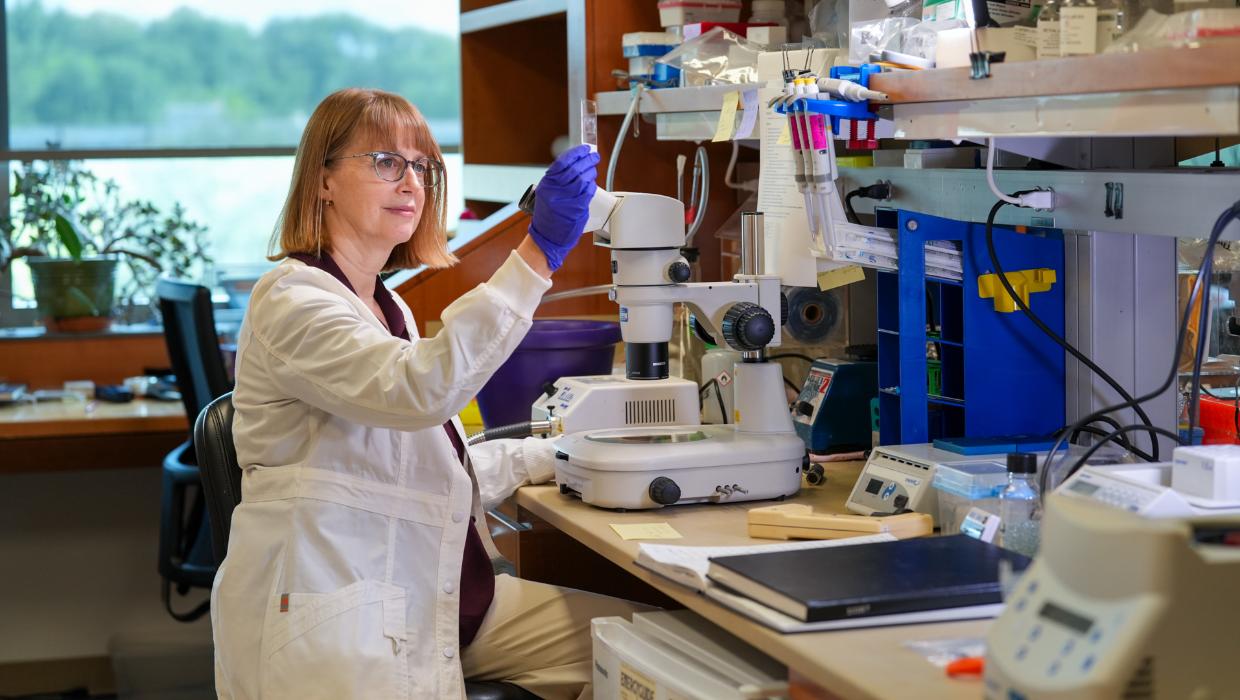Health
Scientists Unravel Genetic Mystery Behind Infertility Issues

A team of researchers at the University of California has made a significant breakthrough in understanding a genetic anomaly linked to infertility. Their findings reveal that a missing chromosome can play a critical role in a couple’s ability to conceive, offering new hope to those struggling with reproductive issues.
When couples experience challenges in conceiving or suffer from recurrent pregnancy loss, they often turn to genetic testing for answers. A shocking discovery can emerge from these tests: one partner may have a missing chromosome, which can disrupt normal reproductive processes. This genetic anomaly has long remained a puzzle for scientists, but recent research sheds light on its underlying mechanisms.
Understanding the Genetic Factors
The research team conducted a comprehensive study involving over 300 couples facing infertility challenges. By analyzing genetic samples, they were able to pinpoint specific chromosomal deficiencies that could lead to complications in conception and pregnancy. The study, published in the journal *Nature Genetics* in March 2024, emphasizes the importance of thorough genetic screening in fertility assessments.
According to Dr. Emily Chen, a lead researcher on the project, “Our findings indicate that missing chromosomes can significantly alter reproductive capabilities. By identifying these genetic factors, we can offer tailored solutions for couples experiencing infertility.” This research not only helps in diagnosing infertility but also paves the way for potential treatments.
The implications of this study extend beyond individual couples. As infertility rates rise globally, understanding the genetic components offers a wider perspective on reproductive health. According to the World Health Organization, approximately 15% of couples worldwide face infertility issues, highlighting the urgent need for effective solutions and interventions.
Potential for Improved Treatment Options
The breakthrough opens new avenues for reproductive medicine. With a better understanding of the genetic factors at play, healthcare providers may soon be able to offer more personalized treatment plans. For example, couples diagnosed with specific chromosomal deficiencies could benefit from targeted therapies or assisted reproductive technologies that take their genetic profiles into account.
Furthermore, the study emphasizes the necessity for increased awareness and accessibility of genetic testing. Many couples may not be aware that a chromosomal anomaly could be affecting their fertility. Increasing education about genetic screening could lead to earlier diagnoses and improved outcomes for those struggling to conceive.
As the research community continues to delve into the complexities of human genetics, this discovery marks a significant step forward. It has the potential to transform how infertility is approached and managed, providing hope to countless couples around the world. By addressing the genetic factors that contribute to infertility, researchers are not just solving a puzzle; they are paving the way for a brighter future in reproductive health.
-

 World5 months ago
World5 months agoTest Your Knowledge: Take the Herald’s Afternoon Quiz Today
-

 Sports5 months ago
Sports5 months agoPM Faces Backlash from Fans During Netball Trophy Ceremony
-

 Top Stories2 weeks ago
Top Stories2 weeks agoTongan Star Eli Katoa Shares Recovery Update After Surgery
-

 Lifestyle5 months ago
Lifestyle5 months agoDunedin Designers Win Top Award at Hokonui Fashion Event
-

 Entertainment5 months ago
Entertainment5 months agoExperience the Excitement of ‘Chief of War’ in Oʻahu
-

 Sports5 months ago
Sports5 months agoLiam Lawson Launches New Era for Racing Bulls with Strong Start
-

 World5 months ago
World5 months agoCoalition Forms to Preserve Māori Wards in Hawke’s Bay
-

 Health5 months ago
Health5 months agoWalking Faster Offers Major Health Benefits for Older Adults
-

 Lifestyle5 months ago
Lifestyle5 months agoDisney Fan Reveals Dress Code Tips for Park Visitors
-

 Politics5 months ago
Politics5 months agoScots Rally with Humor and Music to Protest Trump’s Visit
-

 Top Stories5 months ago
Top Stories5 months agoUK and India Finalize Trade Deal to Boost Economic Ties
-

 Health3 months ago
Health3 months agoRadio Host Jay-Jay Feeney’s Partner Secures Visa to Stay in NZ









